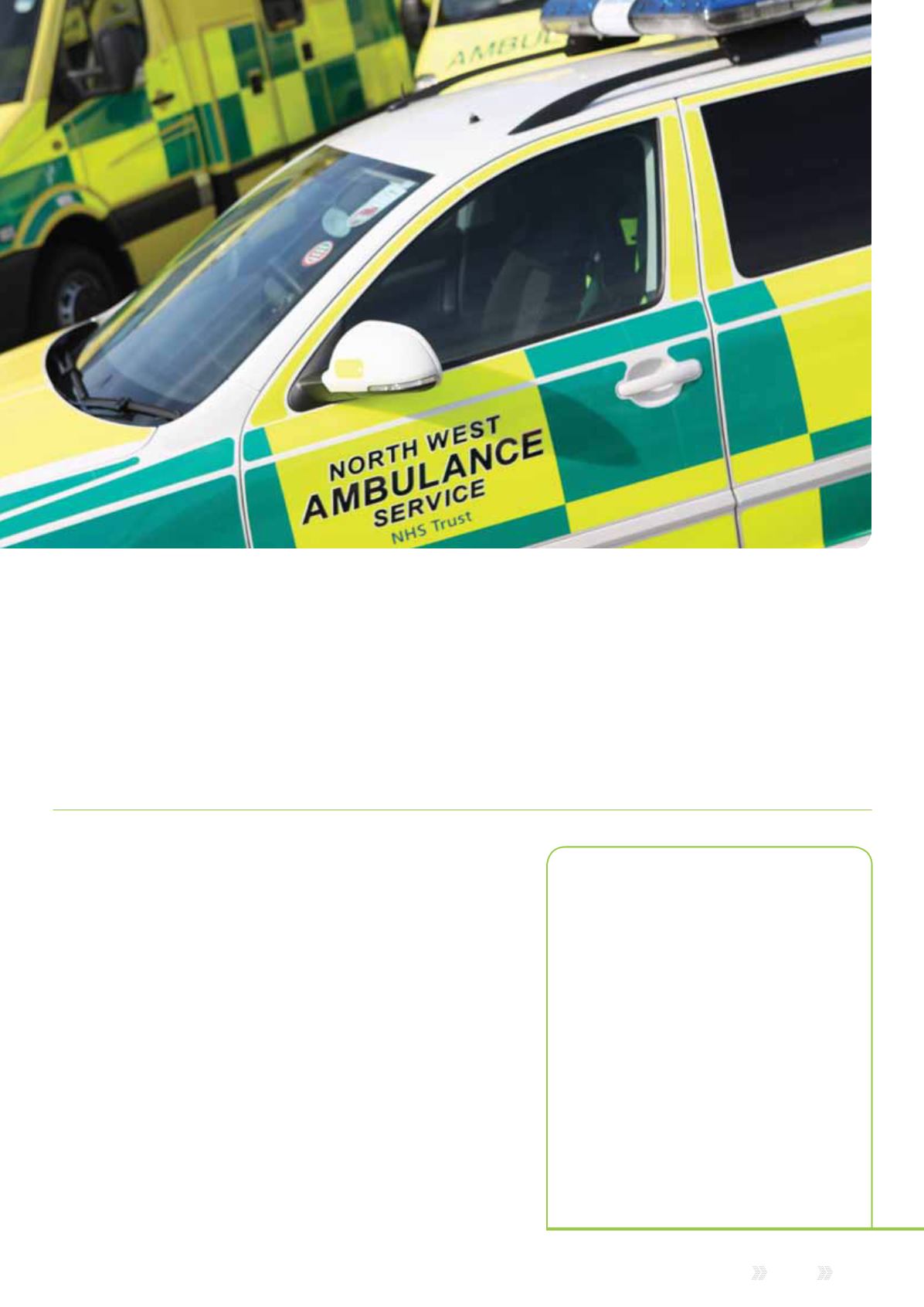
Reach
Issue 7 2014
|
15
New alert service means
faster response time to
medical emergencies
T
he North West Ambulance
Service NHS Trust (NWAS)
is the driver behind an
innovative and unique new service
being provided by Airwave.
Cumbria and Lancashire have
more than 900 Community First
Responders, making up 75% of
the total Trust volunteer base. With
response times critical in medical
emergencies, a new approach was
needed to ensure volunteers could
be alerted to incidents in their
location, and to enable volunteers
to respond to the control centres
with regard to their availability.
Mark Evans, NWAS Community
Resuscitation Manager & British
Heart Foundation (BHF) Healthcare
Practitioner for Cumbria and
Lancashire, takes up the story:
“Our legacy system was based
on standard analogue pagers,
so the control centre didn’t have
confirmation that alerts had been
received, and the volunteers
didn’t have an immediate way of
acknowledging the alert.
“With the establishment of a
dedicated 24-hour control room for
the volunteers, the system improved
but the paging was still based on an
automatic system where mandatory
information had to be input before
the message was sent out – so if
the controllers didn’t have all the
information about the incident, it
could take several minutes for the
message to be sent. It was also
still a one-way paging system, with
volunteers having to call back via
standard fixed or mobile telephones
The North West Ambulance Service NHS
Trust (NWAS) provides a 24/365 emergency
service, as well as the non-emergency Patient
Transport Service. NWAS receives more than
one million emergency calls a year, handled
by the Trust’s emergency control centres
based in Manchester, Liverpool and Preston.
NWAS is the second largest ambulance
trust in England, providing services to a
population of seven million people across a
geographical area of approximately 5,400
square miles. Headquartered in Bolton, the
Trust has 109 ambulance stations, four area
offices, three emergency operations centres,
one support centre, two patient transport
control rooms and two Hazardous Area
Response Teams (HART) buildings.
NWAS receives more than one
million emergency calls a year


